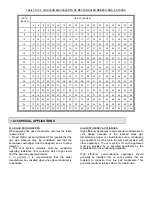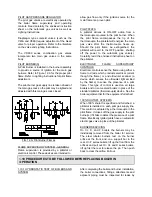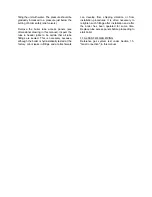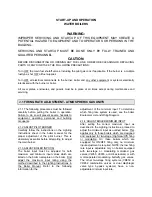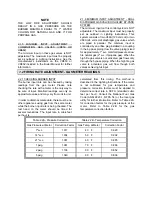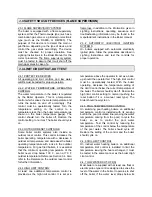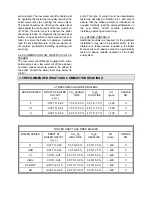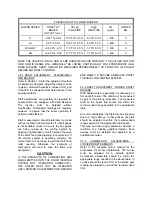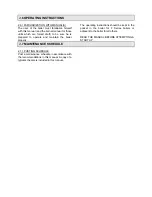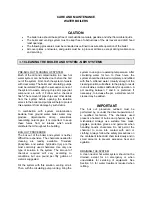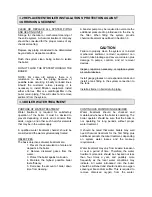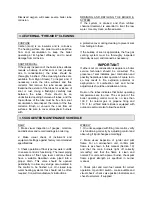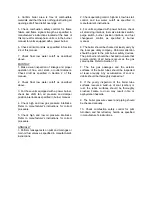
4. Confirm boiler area is free of combustible
materials and that there is nothing obstructing air
openings, draft hood relief openings, etc.
5. Check combustion safety controls for flame
failure and flame signal strength as specified in
manufacturer's instructions located at the back of
this manual for atmospheric units or in the burner
manual for units equipped with a power burner.
6. Check all limit controls as specified in Section
2.4 of this manual.
7. Check float low water cutoff as described
above.
MONTHLY
1. Make visual inspection of linkage and proper
operation of flue, vent, stack, or outlet dampers.
Check draft as specified in Section 2 of this
manual.
2. Check float low water cutoff as described
above.
3. For those units equipped with a power burner,
check low draft, fan, air pressure and damper
position interlocks as specified in burner manual.
4. Check high and low gas pressure interlocks.
Refer to manufacturer's instructions for correct
procedure.
5. Check high and low oil pressure interlocks.
Refer to manufacturer's instructions for correct
procedure.
ANNUALLY
1. Perform leakage tests on pilot and main gas or
main oil fuel valves as specified in manufacturer's
instructions.
2. Check operating control, high limit, low fire start
control, and low water cutoff as specified in
manufacturer's instructions.
4. For units equipped with power burners, check
air atomizing interlock, fuel valve interlock switch,
purge switch, burner position interlock, and fuel
changeover control, as specified in burner
manual.
6. The boiler should be checked at least yearly by
the local gas utility company. Particular attention
should be paid to the pilot burner safety devices.
The pilot burner should be checked to ensure that
prompt ignition of all burners occurs as the gas
valve opens. Refer to Section 1.9.
7. The flue gas passages and the exterior
surfaces of the boiler tubes should be inspected
at least annually. Any accumulation of soot or
debris should be thoroughly cleaned out.
8. If the yearly inspection of the boiler tube
surfaces reveals a build-up of soot (carbon) or
rust, the tubes surfaces should be thoroughly
brushed. Failure to do so may result in fire or
asphyxiation hazards.
9. The boiler pressure vessel and piping should
be checked annually.
10. Check combustion safety control for pilot
turndown and hot refractory hold-in as specified
in manufacturer's instructions.
Summary of Contents for AB Series
Page 22: ......


